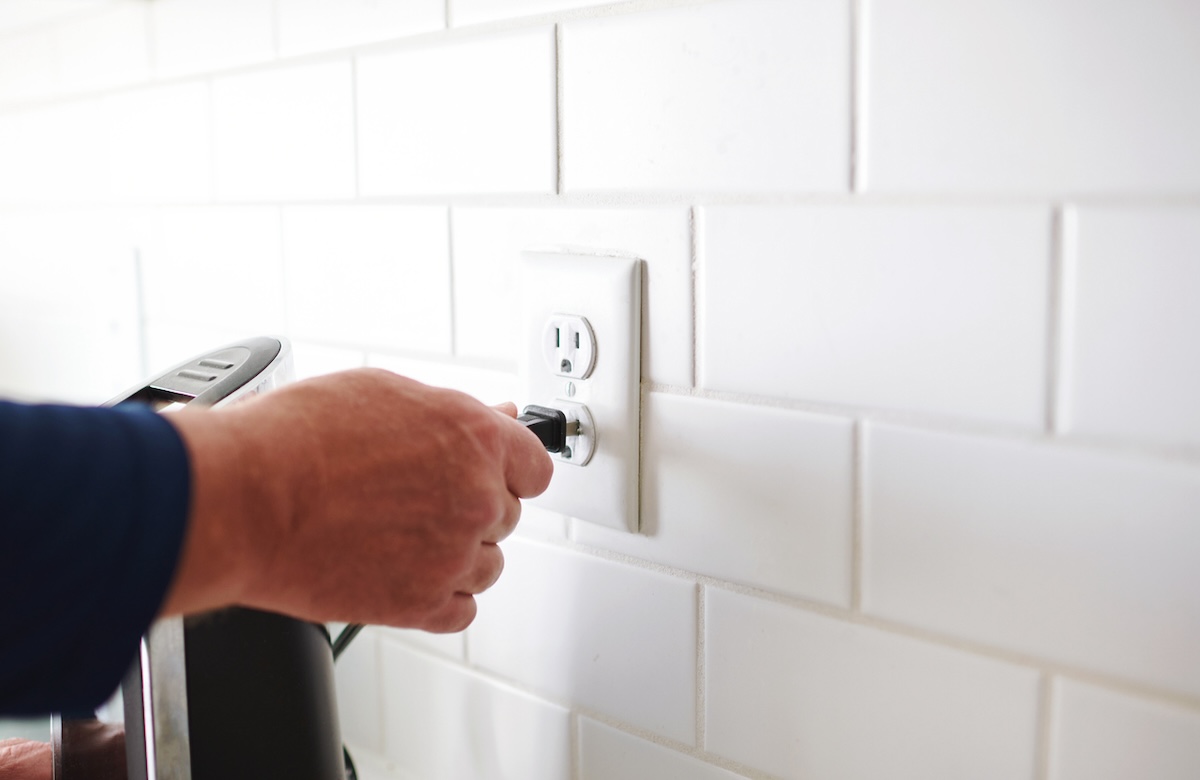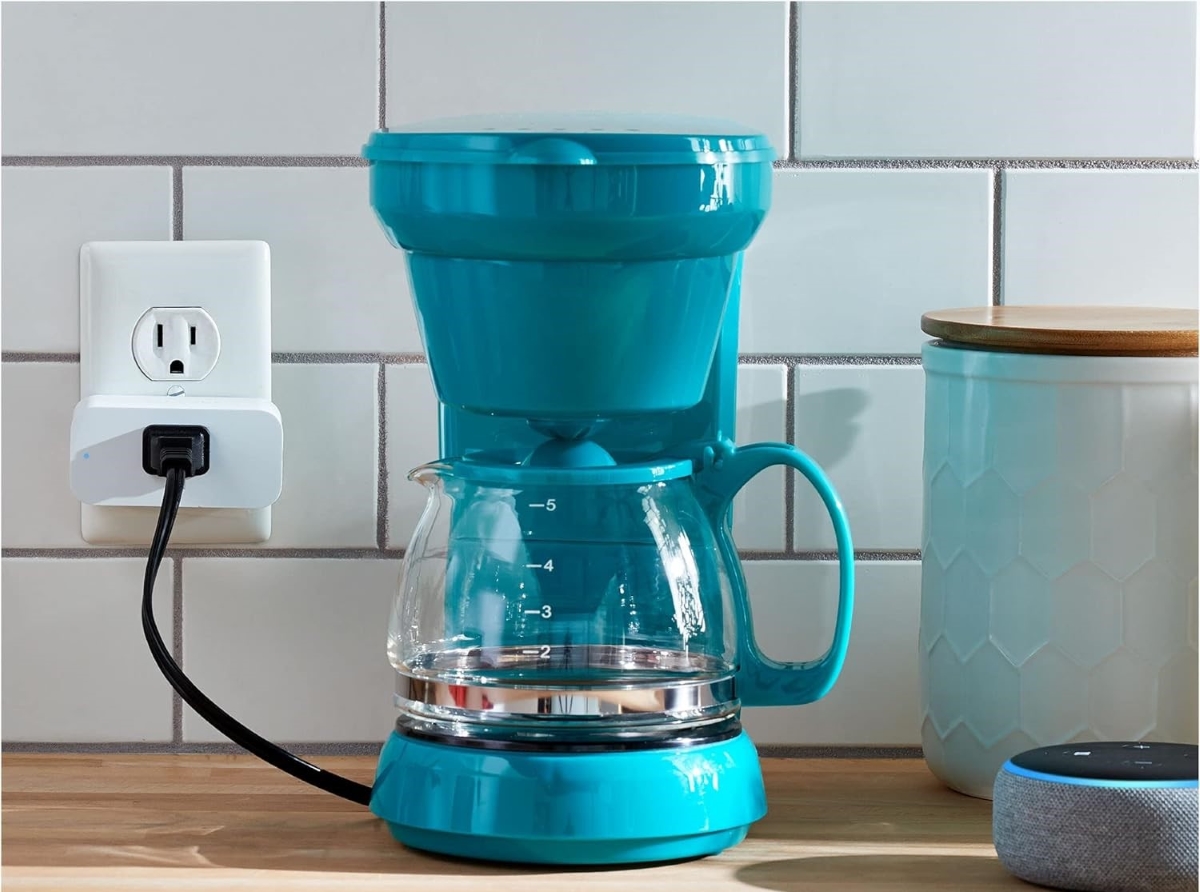

We may earn revenue from the products available on this page and participate in affiliate programs. Learn More ›
Q: My friend told me that I should start unplugging my appliances when they’re not in use to save electricity. Does unplugging appliances save electricity? It seems like they shouldn’t be drawing any power if they’re not even on.
A: You’re not alone in asking: “Does unplugging appliances save electricity?” Believe it or not, your friend is right. Leaving appliances plugged in after use is one way you may be accidentally wasting energy. Every little bit adds up, and that can leave many homeowners wondering why their electric bill is so high each month.
Ahead, learn how much money you could save by simply unplugging appliances, and which ones are the most wasteful when left plugged in.

Standby power can cost homeowners $100 or more each year.
Antoni Singer, founder of Breezer Freezer, shares, “Many electrical appliances consume a small amount of energy even when turned off, a phenomenon known as ‘standby power’ or ‘phantom load.’” According to Singer, the energy they’re pulling to remain in standby power “is used to maintain features like clocks, displays, or remote control readiness.”
The United States Department of Energy explains that any appliance that constantly draws about 1 watt of electrical current will use the equivalent of 9 kilowatt-hours (kWh) over the course of the year. Homeowners could spend an additional $100 to $200 per year in energy costs for keeping non-essential electronics plugged in and in standby mode.
As Singer notes, “While individually these energy draws may seem insignificant, they can add up over time, leading to higher energy bills and increased environmental impact.”
RELATED: Energy Efficiency: What Do All Those Ratings Really Mean?
Unplugging appliances can also reduce some electrical risks.
There are other reasons to unplug appliances when not in use. In addition to helping save electricity, unplugging home electronic devices when you don’t need them can help minimize the chances of an electrical fire. Power surges caused by lightning strikes, faulty wiring, electrical overload, and more have the potential to be dangerous. If the surge is strong enough, it can cause appliances that are plugged in to overheat, or in some cases, catch on fire.
An overheated cord that is left plugged in from a coffee maker or air fryer could also cause a fire. Additionally, the circuit boards of these and other small devices have been known to fail, resulting in a house fire. The safest option is to unplug any devices that are not in use, especially when you will not be home to notice the early warning signs of a problem.

Smart plugs and power strips can simplify the task of unplugging appliances.
Unplugging appliances when you aren’t using them may not always seem realistic. For example, if the plug for your microwave is behind a cabinet, it won’t be convenient to unplug it or plug it back in every time you want to heat something up.
One option that The United States Department of Energy recommends is to use a power strip with switches, like the Belkin Power Strip Surge Protector that’s available at Amazon. These electricity-saving devices make it possible to turn off everything that’s plugged into them by just flipping one switch.
While smart plugs—like the Amazon Smart Plug—do not have surge protection, you could plug them into a surge protector and more easily power on and off your electronics. Once the smart plug is set up, simply tell the virtual assistant to power off your devices if you don’t want to physically unplug computers, televisions, or anything else.
The 8 Biggest Energy Vampires You Should Be Unplugging
With the sheer number of appliances and electronic devices found in nearly every home, it may not be possible to unplug each and every one of them when they aren’t in use.
Below are some of the appliances and electronics with the highest energy draw that you might want to make a point of unplugging whenever possible.

- Computers and laptops: Placing a computer or laptop into standby mode can reduce its energy consumption, but it will still be pulling some electricity. Unplug these electronics when they’re not in use to stop them from pulling 15 to 20 watts of energy when in standby mode. Plugging your computers and other office electronics—such as printers—into the same power strip can make it easy to shut them off and stop them from wasting electricity.
- Game consoles: Many gaming systems pull power so they can remain ready to let you start off right where you last stopped. To stay in standby mode, they’re constantly pulling electricity. Consider unplugging these devices when you don’t need to get back to precisely where you last were in the game.
- Light fixtures: Some newer light fixtures are advanced, with features such as voice-activation. These devices will need to remain in standby mode to be ready to respond to prompts, causing them to constantly pull energy from the outlet. Leave them unplugged when you don’t need to use them.
- Cell phone chargers: Many people leave their cell phone charger plugged in all the time. While the amount of energy these power cords pull isn’t much compared to some larger appliances, it can add up when they’re left plugged in 24/7. Either unplug these after each use or connect them to a power strip that you switch off when not needed.
- Set-top cable boxes and DVRs: If you still have older set-top cable boxes or DVRs around, they may be pulling more energy than you realize. These models are much less efficient than newer versions, and can pull up to 45 watts of energy, even when they aren’t being used.
- Microwaves: Many people leave their microwaves plugged in all the time. However, doing so can lead to wasting energy. Microwaves typically pull about 4 watts when they’re in standby mode to keep the clock and other features running and ready for use. Over the course of a year, this can add up to about 35 kWh.
- Small kitchen appliances: There are likely several small appliances in your kitchen that you use only for a few hours each day—or every few days. Unplug your coffee maker, air fryer, toaster, and other small appliances to save up to $20 each year. Coffee makers, for example, can pull between 1 and 3 watts when they are off but still plugged in.
- Space heaters: Unplugging space heaters when they’re not in use is important to reduce the risk of a fire, but it can also help you save money. Unplugging the space heater will prevent it from pulling any energy and increasing your utility bills.
